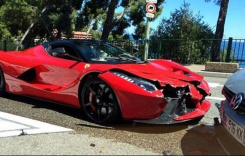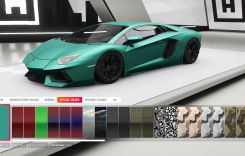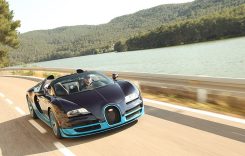
When lining up the Honda CRF250X next to its Austrian-built competition, it looks to be a lopsided battle. The only Japanese 250cc enduro machine left in American dealerships, the 250X has not been updated since 2009 except for receiving new graphics and a white rear fender. The machine used in this comparison is a 2013 model as Honda did not bring in a 2014 CRF250X. Sure, it may seem a bit stagnant, but even so the CRF250X is a fine enduro machine, surprising the entire testing crew.

One thing the CRF205X has that the competition doesn’t is a carburetor. That’s right, the Honda’s 249cc Unicam engine is fed by some old school tech. Starting the CRF requires turning the petcock on, pulling the choke and thumbing the starter button. When the temps are mild the engine springs to life quickly, but some extra time on the button is needed on colder mornings. While it brings back fond memories of the warm-up dance we used to do with all motorcycles, we’d prefer to have fuel injection.
Despite the less than high-tech fuel delivery, the CRF250X has a very usable engine character, especially in the low to midrange. Its torquey bottom-end is especially useful in tight trails and technical riding. Traction is key as the difficulty of an obstacle increases and the Honda puts the power to the ground exceptionally well. A less explosive powerband makes for


an easy-to-ride machine, and not one of us complained when it was our turn to take the red bike on Sand Hollow’s more difficult trails.
“Yeah, it might not have the power and punch of the other bikes, but it’s so easy to ride,” says Chris Northover. “And actually on the rocks it was one of the best. Rock crawling over the big boulders, the engine is so tractable and easy to use that you never felt like it was going to get away from you.”
The junior Pavey, Llel, added, “It was actually really fun to ride, especially on the technical parts like the slick rock. The engine doesn’t have as much power, so it gets tons of grip.”
Their comments on the lower power output of the CRF250X were backed up by the results on the MotoUSA DynoJet 250i dynamometer. The Honda put out the lowest numbers with 27.93 horsepower and 16.74 lb-ft of torque. That’s 4.2 ponies or 13% less than the highest number from the Husaberg. However, the Honda is the quietest on the trail at both idle and on the gas, taking the win in the sound category.
On the trail, the handling of the CRF is less sharp in every way compared to the KTM, Husaberg and Husqvarna. Every change in direction feels just a little more sluggish, but it does track well and feels planted in turns. Perhaps a better way of describing the Honda, is that it is less hyper. This is a good trait when the speeds are slow and being settled is important to staying in control. When the pace increases on more open trails the X falls short of the other three, but is settled thanks to the factory installed steering damper. For novice riders the CRF could be the best mount to take on most terrain.

Suspension duties are handled by a 47mm Showa upside-down fork with adjustable compression and rebound damping and a Pro-Link rear-end with a Showa piggyback shock with high-and low-speed compression as well as rebound adjustment. Overall, the ride is soft, but once again it makes for great confidence in the more technical or sketchy sections of


trail. The CRF250X plows though rocks and square-edge bumps without any hint of deflection, but aim it at a high-speed whoop section or a jump and you’ll quickly find its limits.
Life behind the CRF250X’s bars feels right at home to anyone that has spent time on a Honda. The rider’s triangle is roomy with a nicely padded seat for long days in the saddle. Its twin-spar aluminum frame is nice and narrow between the rider’s legs when standing, but it still feels portly when seated. While it feels like it has more heft at speed than the rest, its 251-pound curb weight is the lowest of the test and is evident at low speed. The standard Renthal Aluminum bars are nice, but do not compete with the feel of the tapered bars on the Euro bikes. The grips are less comfortable as well.
The clutch has a very light feel with an engagement that is positive but not grabby. It’s the only cable-operated system in this test, but it works so well we were not left wanting. This, once again, plays in to the CRFs strengths when the trail tests you. The gear spacing is set up perfectly for a do-it-all bike, and not once did we have issue rowing through the gears.
The 240mm front rotor squeezed by a twin piston caliper has decent power and feel, but pales in comparison to the Brembo stoppers on the KTM-built machines. This does play into the easy-to-ride theme though, as novice riders will have a less grabby lever to get in trouble with. At the rear the single piston caliper has a slightly soft feel at the pedal but modulates well.

We expected the Honda to be trounced by the other three bikes in every category, but in a very short time it earned our respect as an excellent enduro mount for those that are less aggressive. It is a choice that should be thoroughly considered, especially if MRSP is a big issue. In tight technical sections it shined, but overall it is less of a weapon for slaying trails than the KTM, Husaberg and Husqvarna. In our 2014 250 Enduro Shootout the 2013 Honda CRF250X finishes in fourth place, but we don’t see it as a loss. Rather, it won our admiration for being so good as to not fade into the background when clearly out-gunned on the spec sheets and dyno charts.









